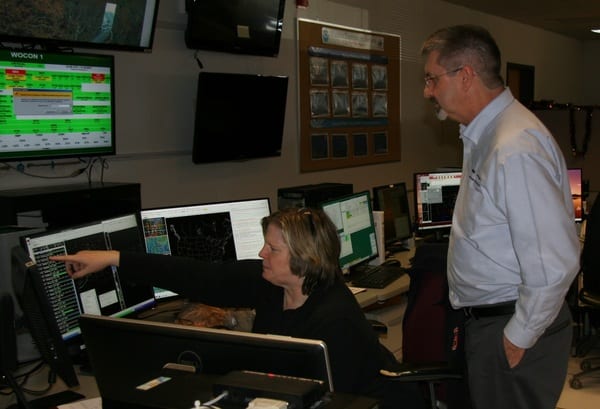One factor rises above the rest when accurately predicting future energy use: the weather
 How the ISO uses weather forecasts in formulating electric demand estimates
How the ISO uses weather forecasts in formulating electric demand estimates
Earlier this summer, on July 7, 2016, a cold front moved into New England from the north, leading to unexpectedly cooler temperatures across the region. Boston hovered in the mid-60s for most of the day. An unanticipated thunderstorm in Hartford caused a quick and dramatic drop in temperatures. The cool weather lasted through July 8.
For most living in the area, the sudden shift in weather was not much more than a reason to grab an umbrella or jacket. But inside the ISO New England control room, the unforeseen change in weather represented a major challenge because it caused a rapid and significant drop in consumer electric demand.
ISO New England operators work around the clock to make sure the region has an adequate supply of electricity, while also ensuring that too much energy isn’t generated and transmitted across the grid. Having more electricity on the lines than is needed at the moment can damage system equipment, hinder power from flowing properly, and threaten reliability.
To help balance supply and demand, ISO forecasters plan ahead and chart out expected energy demand for each hour a day in advance. These daily forecasts take a number of factors into account, including the season, day of the week, time of day, holiday activity, or other special events.
But one factor rises above the rest when accurately predicting future energy use: the weather.
Recently, ISO forecaster Brian Molloy spoke to nearly a dozen meteorologists at the National Weather Service (NWS)–Boston’s annual winter preparation meeting in Taunton, Mass., detailing how the ISO uses weather forecasts and how important their forecasts are in formulating electric demand estimates.
 ISO New England forecaster Brian Molloy tours the National Weather Service’s control room in Taunton.
ISO New England forecaster Brian Molloy tours the National Weather Service’s control room in Taunton.
ISO New England subscribes to three private weather vendors and combines those daily forecasts into one main weather forecast, focusing on factors like hourly temperature, dew point (humid days lead to a surge in air conditioning use), cloud cover, and precipitation. This forecast is then fed into a computer program that searches for historically comparable days—a process forecasters used to do manually by looking through books of historical energy demand.
The resulting “similar-day model” forecast is produced. Then the same weather information is run through a pair of artificial intelligence computer models to produce several more forecasts. Finally, all the results of the multiple models are reviewed and blended to deliver a daily electricity demand forecast that guides how the ISO control room operates the grid throughout the day.
On days like July 7 and 8, when temperatures averaged more than 10 degrees below initial forecasts, homes and businesses across New England weren’t turning to air conditioning to stay comfortable, eliminating one of the major drivers of summer energy use. Peak consumer electric demand was 2,371 megawatts (MW) less than what was expected on July 7, and 3,450 MW less on July 8. The change led system operators to juggle resources, requiring them to tell power plants in the region to reduce their production or shut down completely.
 A National Weather Service meteorologist demonstrates how he creates a weather forecast.Periods of extreme weather, such as tornados or hurricanes, could also pose a threat to electric reliability if they affect power plants that generate or transmission lines that deliver power. When extreme weather is expected, ISO forecasters stay in regular direct communication with NWS officials to keep up to date on the severity, timing and paths of storms, or other issues that might come into play.
A National Weather Service meteorologist demonstrates how he creates a weather forecast.Periods of extreme weather, such as tornados or hurricanes, could also pose a threat to electric reliability if they affect power plants that generate or transmission lines that deliver power. When extreme weather is expected, ISO forecasters stay in regular direct communication with NWS officials to keep up to date on the severity, timing and paths of storms, or other issues that might come into play.
As the region continues to integrate renewable resources like solar and wind, ISO forecasters increasingly rely on wind and cloud-cover forecasts to determine how much energy these intermittent resources can be expected to produce on a given day.
The ISO will continue working closely with the NWS and private weather vendors to exchange ideas on dealing with difficult forecasts as the energy landscape evolves, and highlight the interconnection of weather and energy use.
- Categories
- Inside ISO New England
- Tags
- forecast, peak demand, renewable resources, summer, weather, winter



